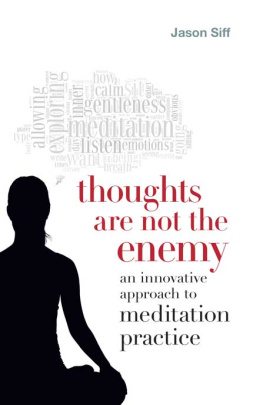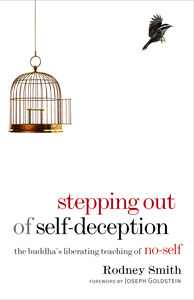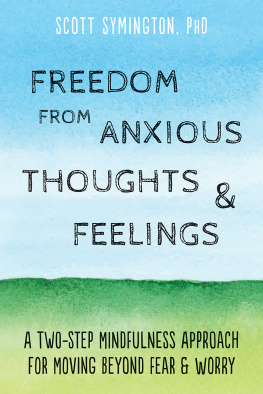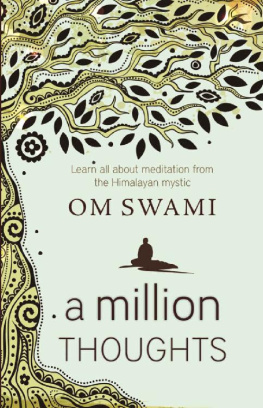ABOUT THE BOOK
In most forms of meditation, the meditator is instructed to let go of thoughts as they arise. As a result, thinking is often taken, unnecessarily, to be something misguided or evil. This approach is misguided, says Jason Siff. In fact, if we allow thoughts to arise and become mindful of the thoughts themselves, we gain tranquility and insight just as in other methods without having to reject our natural mental processes. And by observing the thoughts themselves with mindfulness and curiosity, we can learn a good deal about ourselves in the process.
JASON SIFF is the head teacher of the Skillful Meditation Project. He teaches meditation and leads retreats throughout the United States and in Australia.
Sign up to receive news and special offers from Shambhala Publications.

Or visit us online to sign up at shambhala.com/eshambhala.
Thoughts Are Not the Enemy

An Innovative Approach to Meditation Practice
Jason Siff

Shambhala
Boston & London
2014
SHAMBHALA PUBLICATIONS, INC.
Horticultural Hall
300 Massachusetts Avenue
Boston, Massachusetts 02115
www.shambhala.com
2014 by Jason Siff
Cover design by Gopa & Ted2, Inc.
Cover art: Thinkstock
All rights reserved. No part of this book may be reproduced in any form or by any means, electronic or mechanical, including photocopying, recording, or by any information storage and retrieval system, without permission in writing from the publisher.
LIBRARY OF CONGRESS CATALOGING-IN-PUBLICATION DATA
Siff, Jason.
Thoughts are not the enemy: an innovative approach to meditation practice / Jason Siff.First edition.
pages cm
Includes bibliographical references and index.
eISBN 978-0-8348-3008-0
ISBN 978-1-61180-043-2 (paperback)
1. MeditationBuddhism. 2. Meditation. I. Title.
BQ5612.S538 2014
294.34435dc23
2013046153
In memory of my mother, Eileen Z. (Siff) Schnepp
CONTENTS
An Innovative Approach to Meditation
An innovation is more than just something newit is something at the cutting edge. I think many people today would say that mindfulness is at the cutting edge of meditation. Here, in this book, you will read about an approach to meditation that was developed out of my own practice of mindfulness meditation in the 1980s as a Buddhist monk in Sri Lanka. On the surface it focuses on developing a greater awareness of thoughts in meditation, but at its core, the direction is to form a broad awareness of everything that goes on in meditation: sensations, sense impressions, emotions, breathing, bodily awareness, memories, intentions, mental imagery, and, of course, thoughts.
Taken singly, some of the innovations may not strike you as anything new, but taken together, this meditation practice takes coherent form as something new and intriguing. The most provocative and challenging innovation, for most meditators, is the starting point for this new mindfulness of thinking: not stopping thoughts in meditation but allowing them to run their course. How that can be done skillfully, where it can effectively lead to tranquillity and insights, is the thrust of this approach to meditation.
In these pages, you will find enough meditation instruction to begin an open meditation practice, but you dont have to undertake such a practice to benefit from this book. In fact, you can read this book without ever meditatingthe book itself will bring you into the minds of meditators, much like a good novel opens up the inner worlds of its characters and draws the reader into their lives. So whether you are an armchair meditator or a serious practitioner, my hope is that this book can further your exploration of your inner world and perhaps open up some new territories.
JASON SIFF
IDYLLWILD, CALIFORNIA
MARCH 2013
I was driving down the highway the other day and thought about turning on the CD player. I felt an urge to listen to something other than my own thoughts. Then I paused and wondered what was so bad about listening to my thoughts. Earlier my thoughts were quite interesting and helped me with some work issues, so I didnt mind them as companions on this drive, but then my mind wandered to a movie I saw and some memories of my life as a teenager, and I began to feel shame about a mistake Id made, and soon enough, there I was, itching to hear some music. Why did I want to distract myself from those thoughts? The obvious answer was that they were painful and would get the better of me and I would fear feeling miserable throughout the long drive. The less obvious answer was that I did not know how to be with those thoughts at that momentI had forgotten how to listen to such thoughts.
A similar thing happened while I was meditating one day. My thoughts were focused on a topic I was going to write about, and then the direction turned south and I was thinking about an interaction Id had with someone where I agreed to do something for that person that I didnt really want to do but felt obliged to do on account of our friendship. It seemed too big and complicated to sit with right then. But it kept coming back. I couldnt get any distance from it by noticing it or detaching from it or trying to quickly figure it out. No, this remembered interaction and my ambivalence about it were going to stay despite my wish for it to move on. And then I found my way to relate to it, and it stayed a little while longer, until it dissipated on its own.
We come to meditation to quiet our mind. This can be done by connecting with our thoughts rather than stopping our thoughts. It can be done by being in them and seeing what keeps them going. And it can be done in a kind and gentle way, requiring minimal effort.
So why isnt this approach to meditation commonly taught? Most people believe it wont work, so they never try it. They have been told that allowing thinking in meditation will lead to more thinking; that meditation is about getting out of the head and into the body; that you need to concentrate on a single object, such as the breath, in order for thoughts to die down; or that your true experience is beyond thought, transcending it completely. So they never let themselves think while meditating, and for them, thoughts become the enemy.
Thinking too much in meditation is made into a problem, when it really isnt one. It is just as natural to think about things, make plans, have fantasies, analyze, and problem solve while meditating as it is to feel your breath and body sensations. There is nothing wrong with thinking in meditation. You do it all the time outside of meditation, and then you are expected not to do it when you meditatethat is unnatural.
There seem to be two general types of thoughts that we dont want to have, especially when we are sitting in meditation. One type has to do with the thoughts contentwith the idea that such a thought is unacceptable for anyone meditating, and that even outside of meditation, it might be judged as evil, sinful, or unwholesome. Thoughts involving lust, violence, thieving, deceit, treachery, betrayal, envy, and grandiosity may feel as though they dont belong in meditation, and one may feel that immediate action must be taken to stop them. That is not the position I take. These thoughts can be allowed in meditationgetting to know them and seeing how they work may become an important feature of your meditation practice.
Next page










